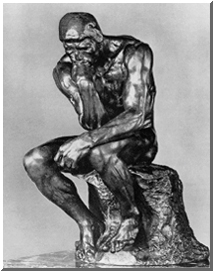|
Reflective
Judgment Interview Research
Overview:
Developing Reflective Judgment (King & Kitchener, 1994)
provides detailed information about studies conducted on the RJM
until the early 1990's. This book provides a review of research
drawn on the responses of over 1,700 participants who completed
the Reflective Judgment Interview (RJI) and results from a 10-year
longitudinal study of three age/educational level cohorts. See Wood
(1997) for a comprehensive secondary analysis of available RJI data.
Does the ability to make reflective judgments develop over time?
While cross-sectional data can be used to determine whether
or not development occurs, longitudinal studies provide a more rigourous
assessment of development over time (See Kitchener & King, 1981;
King, Kitchener, Davision, Parker & Wood, 1983; Kitchener, King,
Wood, & Davison, 1989; Kitchener & King, 1990a; King &
Kitchener, 1994). Longitudinal studies using the RJI document the
slow, steady pace of the development of reflective judgment. King,
Kitchener and Wood (1994) reported that individual and modal scores
for each participant in a ten-year study indicated a persistent
pattern of upward change: higher stage usage followed lower stage
usage. The authors characterized development as "waves across
a mixture of stages, where the peak of the wave is the most commonly
used set of assumptions. While there is still an observable pattern
to the movement between stages, this developmental movement is better
described as the changing shape of the wave rather than as a pattern
of uniform steps interspersed with plateaus" (p. 140). The
wave shape that King and Kitchener observed is consistent with Rest's
(1979) complex stage theory.
Are there differences in RJ stages by age-educational level?
In a review of studies where the RJI was administered to 1,500 students
who ranged in age from the teenagers to middle adulthood, King and
Kitchener (1994) found the following:
1. High school students consistently evidenced pre-reflective thinking
(n=172, 11 samples, 5 studies, M=3.2).
2. Traditional-age college students evidenced the use of Stage 3
and 4 assumptions, with the average mean score increasing from 3.6
to 4.0 between freshman and senior classes (n=966, 44 samples, 20
studies, M=3.8).
3. Graduate students have consistently earned the highest RJI scores
(n=196, 12 samples, 7 studies, M=4.76)
4. Consistent upward changes in epistemic cognition have been found
across educational levels.
Are there differences in RJ levels among academic disciplines?
Some studies have been completed that examine the effects of discipline
on gains in Reflective Judgment (DeBord, 1993; King, Wood, &
Mines, 1990). In general, these studies suggest that intense study
in the discipline may provide opportunities to expand the leading
edge for the development of more complex epistemic cognition and
true reflective thinking, especially among seniors and graduate
students. This has also been true for scholastic aptitude, high
school rank, moral judgment, other measures of critical thinking
and intelligence (see King & Kitchener, 1994, 2002).
|
